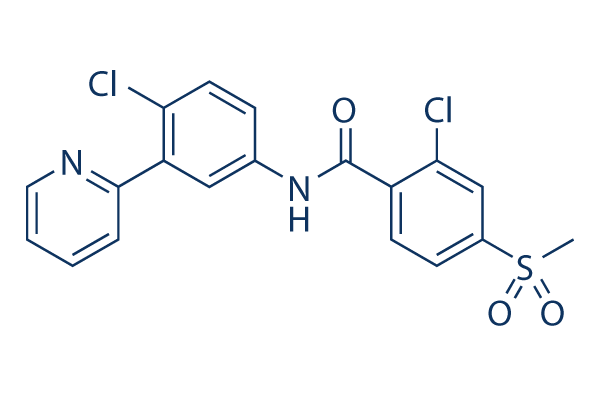Aggregates of the syn had been deter mined for being insoluble as indicated by currently being resistant to proteinase K digestion, a cardinal attribute observed in PD, There was a diminished quantity of nigral TH immunoreactive neurons, at the same time as reduction in total neuronal variety, and, inside of the striatum, a loss of TH immunoreactive fibre density and the pre sence of a syn TH beneficial dystrophic neurites. Further even more, this reduction in TH fibre density was present by way of 6 weeks with a concomitant reduction in stria tal DAT demonstrating a persistence of effect. Consequently, the approach of AAV1 2 delivery of A53T a syn was in a position to replicate, in only three weeks, the key pathological hallmarks of PD. The model implemented right here is simply not the 1st AAV primarily based delivery of the syn to replicate a syn aggrega tion, dystrophic neurites, and related patterns of nigral cell loss.
This is previously demonstrated in other AAV a syn rat designs, whilst with in the know longer durations to accomplish endpoints and variable degrees of cell reduction, Having said that, the magnitude from the losses, the minimal variability as well as the short time program of growth from the pathologies witnessed during the current study, highlight many of the poten tial pros of employing a higher titer AAV1 2 vector when contemplating a model for assessing prospective thera peutics focusing on the toxicity of a syn in PD. AAV1 two delivery of GFP was employed to regulate to the effects of large expression of any exogenous protein. This management demonstrated the high titer of AAV1 two GFP employed here brought about substantial nigral selleck inhibitor dopami nergic toxicity and therefore ought to be regarded when interpreting the toxic results produced by delivery of AAV1 2 a syn or other high titer vectors.
The toxicity of AAV1 2 GFP yet, couldn’t account for all of the A53T a syn induced harm in the nigra, being signifi  cantly much less, and currently being restricted to the SN, So, 3 weeks following the delivery of AAVs, aggregates of the two human a syn and GFP were observed in TH immunoreactive neurons of your SN. Aggregates have been seen inside the bulk of cells expressing the two TH and a syn or GFP. Unbiased stereology demonstrated that AAV1 two A53T a syn and, to a lesser extent, AAV1 2 GFP resulted in sizeable reductions in TH immunoreactive neurons compared to AAV1 two EV injected rats.
cantly much less, and currently being restricted to the SN, So, 3 weeks following the delivery of AAVs, aggregates of the two human a syn and GFP were observed in TH immunoreactive neurons of your SN. Aggregates have been seen inside the bulk of cells expressing the two TH and a syn or GFP. Unbiased stereology demonstrated that AAV1 two A53T a syn and, to a lesser extent, AAV1 2 GFP resulted in sizeable reductions in TH immunoreactive neurons compared to AAV1 two EV injected rats.
BRAF signal
The BRAF gene is a proto-oncogene
